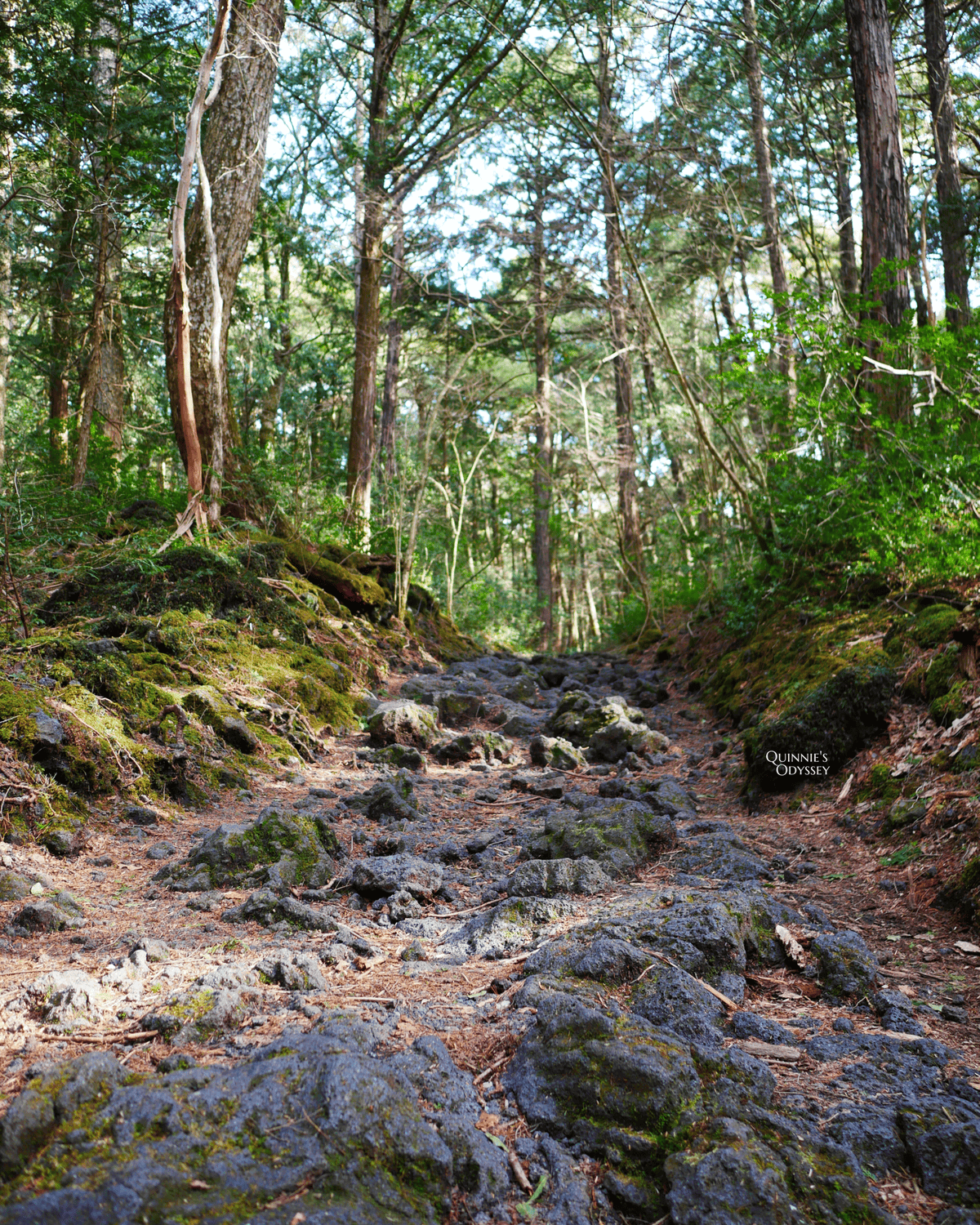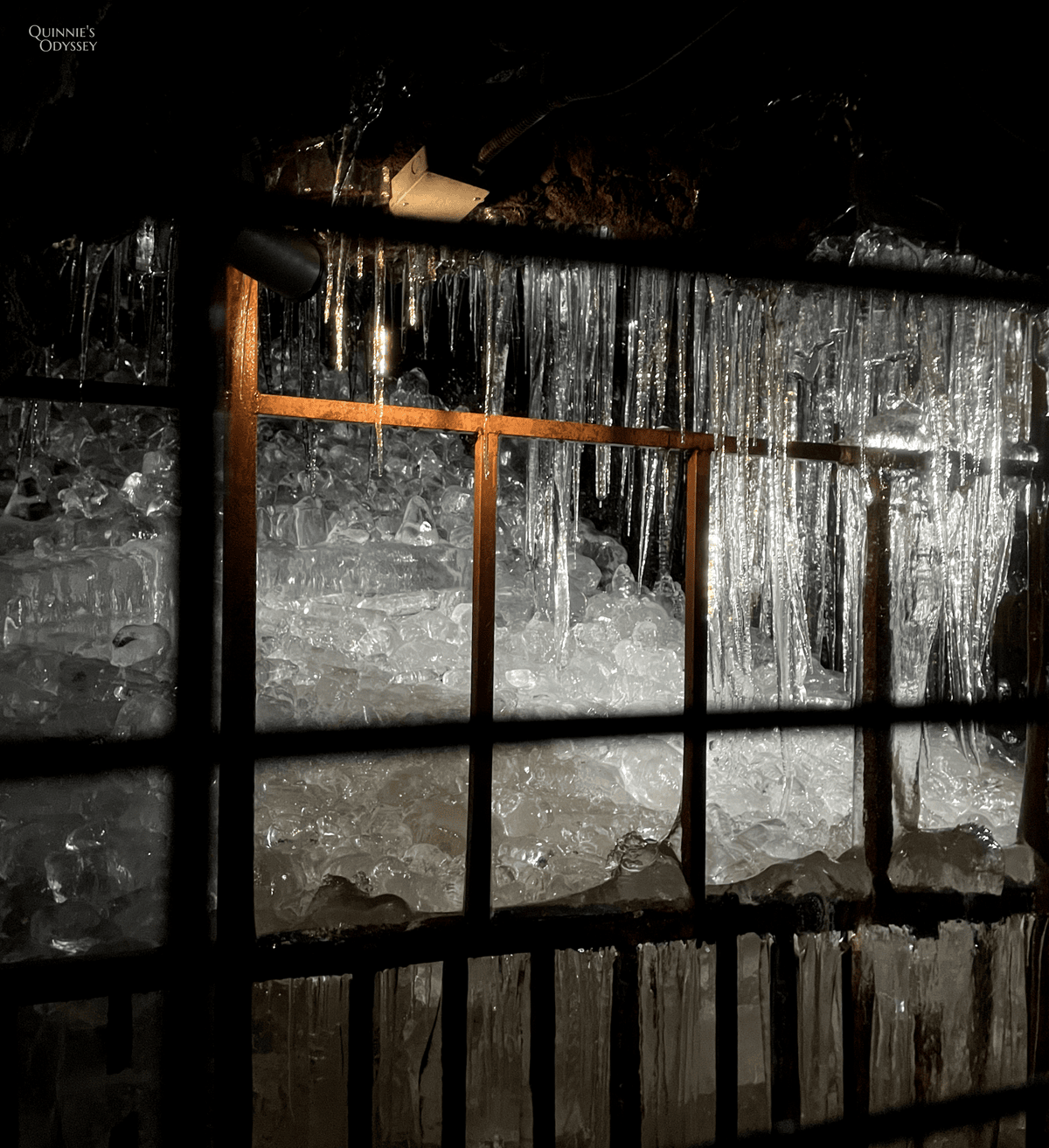Physical Address
304 North Cardinal St.
Dorchester Center, MA 02124
Physical Address
304 North Cardinal St.
Dorchester Center, MA 02124
A while back, I joined a one-day tour of Mount Fuji through KKday, where I visited the Fugaku Wind Cave and the Narusawa Ice Cave.
On the way, we passed by a trail leading into Aokigahara, also known as the Sea of Trees.
This trail seemed to have a magical allure, drawing me in at first sight.
As someone who loves hiking, I felt an irresistible urge to explore it.
But since the trail wasn’t part of the itinerary, I had to suppress my curiosity and continue toward the caves, leaving with a sense of deep regret.
A few months later, I finally overcame all obstacles and made my way back!
This time, we drove directly to the area with a clear goal in mind—exploring the Aokigahara Forest trail.

Aokigahara, located at the foot of Mount Fuji, was formed after the Jōgan Eruption in 864 AD.
For ten consecutive days, Mount Fuji erupted, with lava flows covering the land, swallowing forests and villages, and burying many bodies.

According to records, it was a terrifying sight: “Trees were consumed by fire, lava flowed into lakes, causing them to boil, and all fish and turtles perished…”
Over the next 1,200 years, trees like Japanese hemlock and cypress flourished in the fertile volcanic soil, creating a dense forest. Today, this forest is a sea of intertwined roots and moss, hence the name “Aokigahara,” or the Sea of Trees.
Aokigahara gained notoriety as a “suicide hotspot” due to the influence of Seichō Matsumoto’s novels and the film The Sea of Trees. It was even listed as an ideal place for ending one’s life in The Complete Manual of Suicide. Every year, many people venture into this forest, seeking to end their lives.
The forest’s complex terrain, combined with its uniform tree species and rich magnetite deposits, causes compasses to malfunction, making it easy to lose one’s way inside. This, coupled with the forest’s allure, leaves those who enter with little chance of return.
(However, this time, I checked Google Maps and the positioning was accurate!)
As you walk deeper into the forest, you’ll occasionally see warning signs, urging people to value their lives.

Translation:
“Life is a precious gift given by your parents. Please stop for a moment and think of your parents, siblings, and children. Don’t worry alone. Please seek help first.”
Contact information: Fujiyoshida Police Station Suicide Prevention Hotline: 0555-22-0110
Aokigahara covers more than 30 square kilometers. The specific trail we took, the “Aokigahara Nature Trail,” connects Fugaku Wind Cave and Narusawa Ice Cave.
The distance is about 1.4 kilometers and takes about 30 minutes to walk. Both spots have free parking and shops.
We parked near the Fugaku Wind Cave and started on the trail, eventually reaching the Narusawa Ice Cave parking lot. We then retraced our steps, completing the hike in just over an hour.

Starting from the entrance of the Wind Cave👇

Once you step into Aokigahara, even on a hot day, you can feel the cool breeze of the forest.
Peculiar trees stand tall on both sides of the path, their tangled roots weaving a web across the soft, moss-covered soil.



Along the trail, there are occasional fenced-off areas, warning people not to stray off the path, as getting lost in the Sea of Trees is a real danger.

Remember how Aokigahara was formed by volcanic eruptions and lava flows?
Throughout the hike, you can see small holes in the ground, which were formed by gas escaping as the lava cooled.



Walking through Aokigahara feels incredibly peaceful.
Every now and then, a gentle breeze stirs the leaves, making them rustle softly, as if whispering.
This place feels disconnected from the outside world, making you slow down, reflect, and momentarily leave behind the worries of daily life.
Towering trees line both sides of the trail, their roots intertwining across the ground.
Everything here serves as a silent reminder of the fleeting nature of life and the enduring power of nature.
At one point, I sat down on a moss-covered rock, closed my eyes, and listened to the sounds of nature. This is the perfect place to clear your mind and reflect on life.

I couldn’t help but wonder about the people who come here with finality in their hearts.
The deeper parts of Aokigahara seem to have a certain power, making it hard for those who enter to ever leave.
As I imagined little forest spirits watching from the shadows, I also thought of the lost souls, perhaps still lingering somewhere in the forest, silently weeping.


In this tranquil and mysterious environment, the feelings of loneliness and death subtly seep into the atmosphere.
I stood up and continued along the trail. The beauty of the scenery was undeniable, but it also filled me with a sense of reverence. Each step was a reminder of the fragility and preciousness of life.
After leaving the trail, the path opened up to the ice cave’s shop.
To my surprise, I ran into the same tour guide from the KKday trip I had taken three months earlier!
Shy as I am, I still worked up the courage to approach and say hello.
Luckily, the guide remembered me 😂.
It felt like a reunion with an old friend in an unexpected place.

After a brief chat, we headed back into the forest.
Just then, I saw a snake quickly slither across the leaves and disappear into the bushes.

The snake was well-camouflaged.
If you weren’t paying attention to the ground, you might easily miss it.
For the rest of the return trip, I kept half of my focus on the ground, making sure I didn’t accidentally step on one…
If you love hiking and enjoy the solitude of nature, a walk along the Aokigahara Forest trail is an experience you won’t forget.
Last time, I visited Aokigahara on a KKday one-day tour of Mount Fuji.
This time, I came specifically for the Aokigahara Forest hike, but since the wind and ice caves are nearby, let me introduce them again!
When we visited Aokigahara in the winter, the surrounding trails were blanketed in snow.

Both the Wind Cave and Ice Cave were formed during the Jogan Eruption.
The Aokigahara Nature Trail connects the two, with a hiking distance of about 1.4 km (around 30 minutes of walking). Alternatively, it’s just 800 meters by road and a 2-minute drive.
The average temperature inside the caves remains a cool 3°C (37°F) year-round.
Until the early Showa period, the Wind Cave was used as a natural cold storage for silkworm cocoons.
Since it was winter when we visited, the temperature difference inside the cave wasn’t particularly noticeable.

The Wind Cave trail is mostly flat but can get damp inside, so be careful not to slip.
One of the highlights is the ice pillars inside the cave, which remain frozen even during the summer months. The cave itself is relatively small, and it takes about 15 minutes to explore before heading back.


The Ice Cave features narrow passages and steep slopes, with the lowest ceiling height being only 91 cm (about 3 feet).
At times, you’ll need to crouch or even crawl to make your way through, so it may not be ideal for those with knee problems.

Like the Wind Cave, the Ice Cave maintains a year-round temperature of 3°C and is surrounded by ice, which is how it earned its name.

The cave can be slippery, especially on the stairs, so I recommend wearing good walking shoes.
The Ice Cave follows a circular route, taking you back to the souvenir shop at the entrance.
⭐ If you’re looking for a guided adventure in Aokigahara Forest, check out this tour:
Aokigahara Forest Walk and Lava Cave Exploration 👉👉 KKday
⭐ Interested in a one-day trip around Mount Fuji?
Mount Fuji One-Day Tour 👉👉 KKday
(This tour visits the Wind Cave and Ice Cave, but not the Aokigahara Forest.)

Thanks for reading!
If you’re interested in my stories, feel free to follow me on Instagram.
👉👉 IG: @sika_artist 👈👈